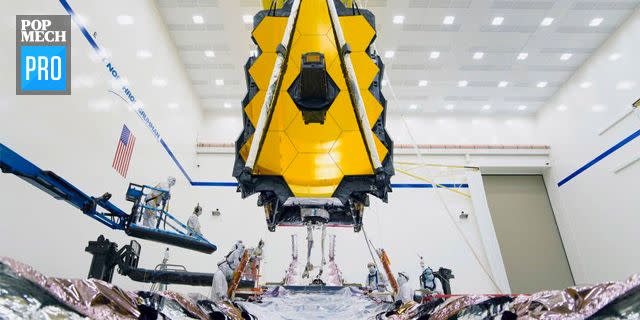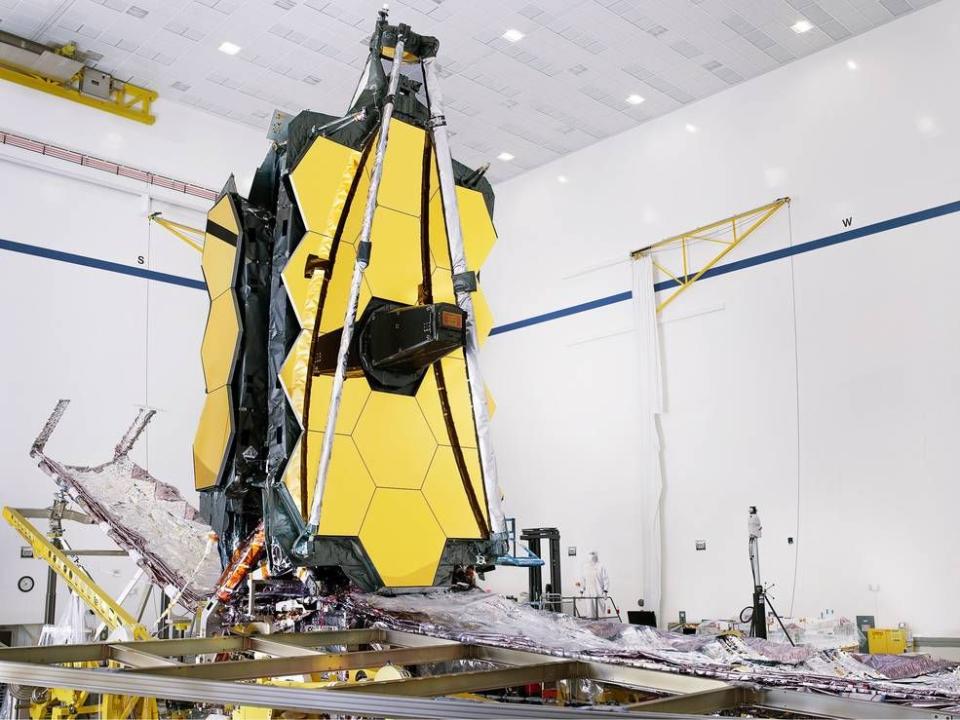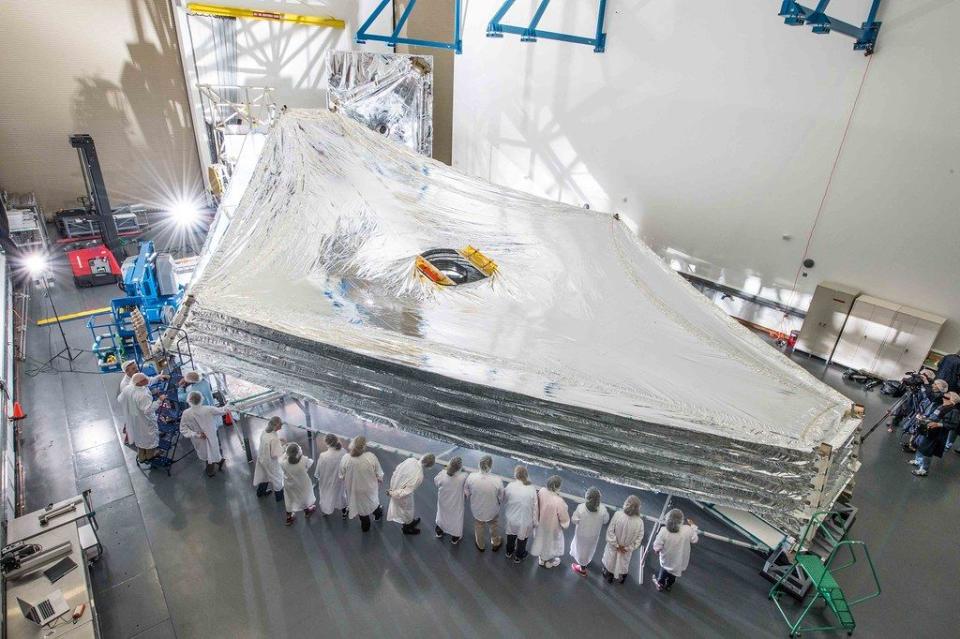In a Major Milestone, the James Webb Space Telescope Is Whole at Last

The James Webb Space Telescope has been merged with its spacecraft and sunshield.
Over two decades in the making, the James Webb has faced several delays.
Meant to be a successor to the Hubble, the chance for an unprecedented space observatory is now closer to reality.
After years of delays, engineers have bridged the two halves of NASA’s James Webb Space Telescope (JWST). Both sides of the JWST were connected in Northrop Grumman’s facilities in Redondo Beach, California. It's a major milestone for the JWST, which has been plagued by construction problems.
Connecting the two halves was a challenge in its own right. The effort combined the JWST, which includes mirrors and science instruments, with an already-combined spacecraft and sunshield. Using a crane, engineers carefully maneuvered the JWST into place, guaranteeing that the telescope's primary points of contact were aligned with 100 percent accuracy with the sunshield.
Now that the JWST has been mechanically connected, the next step will be to electrically connect the two halves. After that, engineers will have to test those electrical connections.
“The assembly of the telescope and its scientific instruments, sunshield and the spacecraft into one observatory represents an incredible achievement by the entire Webb team,” says Bill Ochs, Webb project manager for NASA Goddard Space Flight Center in Greenbelt, Maryland, in a press statement. “This milestone symbolizes the efforts of thousands of dedicated individuals for over more than 20 years across NASA, the European Space Agency, the Canadian Space Agency, Northrop Grumman, and the rest of our industrial and academic partners.”
“This milestone marks a major achievement for all of us at Northrop Grumman and NASA,” says Scott Willoughby, the vice president and program manager of JWST for Northrop, in the company's own press statement. “Seeing the full observatory for the first time further reinforces our commitment to mission success. There is still more work to be done, but it is a great feeling seeing something that was once a concept, become reality.”

The five-layered sunshield will keep the JWST cold, which might sound like something easy to do in the vacuum of space. But the infrared light from the sun, Earth, and even the moon could interfere with the observatory's sensitive instruments, like the Near InfraRed Spectrograph, which will function on a wavelength range of 0.6 to 5 microns. Now that the two halves have been merged, engineers will begin deploying the vital sunshield.
Development on the JWST, meant to be a successor to the famed Hubble telescope and eventually the world's premier space observatory, first began in 1996, with the initial goal of launching in 2007. NASA signed a contract with an Ohio-based company called TRW for construction. In 2002, TRW was acquired by global aerospace and defense technology company Northrop Grumman in a hostile takeover. Three years later, a cost analysis led to significant changes to the telescope, as well as a pushback on its construction date.
As the years grew, the JWST began to loom large in the minds of astronomers across the globe.
"We took it as a given that the JWST would be launched and would be a big success," a cosmologist at the University of Chicago, Illinois told the journal Nature way back in 2010. "Things are built around it." Nature also noted that "with each iteration, the JWST's science objectives swelled."
The project continued to move slowly. Its complexity was no joke: Each layer of the sunshield shares approximately the same area as a tennis court. Its 18 primary hexagonal-shaped mirror segments measure just over 4.2 feet (1.3 meters) across and weigh around 88 pounds. Completed in 2016, the 18 primary mirror segments will work together as one large 21.3-foot diameter mirror.

But the project continued to be plagued by delays. A 2018 report by the U.S Government Accountability Office put the focus on Northup Grumman, some of which come out of the defense contractor's 24-hour work schedule on the observatory. A few months later, it came out that "screws and washers" were falling off the integrated spacecraft and sunshield.
While all of these delays have raised the concern of multiple politicians, the JWST has continued on its long march forward. The JWST saw its $8 billion budget raised by $800 million earlier this year. The launch is now expected in 2021.
“This is an exciting time to now see all Webb’s parts finally joined together into a single observatory for the very first time,” says Gregory Robinson, the Webb program director at NASA Headquarters in Washington, D.C. “The engineering team has accomplished a huge step forward and soon we will be able to see incredible new views of our amazing universe.”
You Might Also Like

